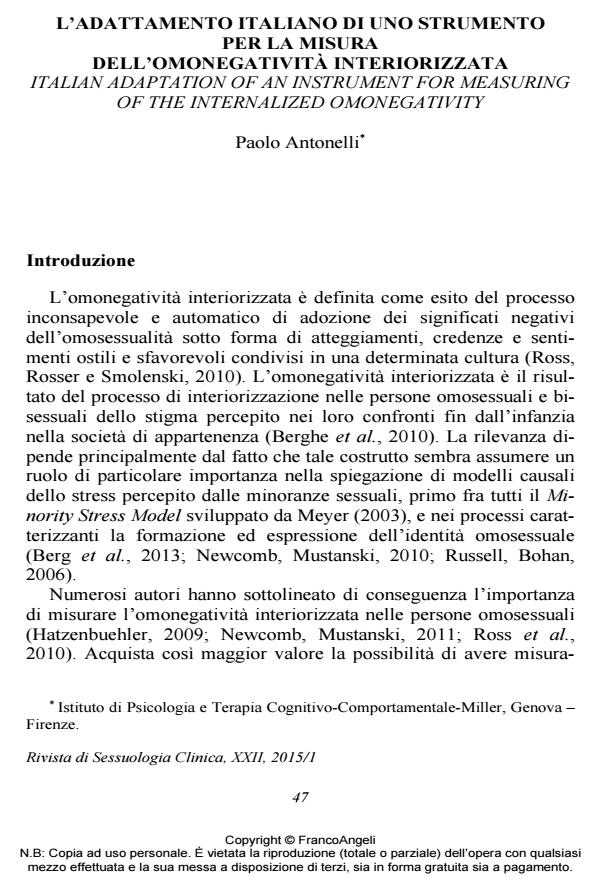L’adattamento italiano di uno strumento per la misura dell’omonegatività interiorizzata
Titolo Rivista RIVISTA DI SESSUOLOGIA CLINICA
Autori/Curatori Paolo Antonelli
Anno di pubblicazione 2015 Fascicolo 2015/1
Lingua Italiano Numero pagine 24 P. 47-70 Dimensione file 123 KB
DOI 10.3280/RSC2015-001003
Il DOI è il codice a barre della proprietà intellettuale: per saperne di più
clicca qui
Qui sotto puoi vedere in anteprima la prima pagina di questo articolo.
Se questo articolo ti interessa, lo puoi acquistare (e scaricare in formato pdf) seguendo le facili indicazioni per acquistare il download credit. Acquista Download Credits per scaricare questo Articolo in formato PDF

FrancoAngeli è membro della Publishers International Linking Association, Inc (PILA)associazione indipendente e non profit per facilitare (attraverso i servizi tecnologici implementati da CrossRef.org) l’accesso degli studiosi ai contenuti digitali nelle pubblicazioni professionali e scientifiche
Dato che nel panorama testistico italiano mancava uno strumento validato per la misura dell’omonegatività interiorizzata in gay e lesbiche, il presente studio si è posto l’obiettivo di adattare al contesto italiano il test Internalized Homonegativity Inventory (Mayfield, 2001). I risultati hanno attestato come il test nella versione italiana presenti buone proprietà psicometriche, dimostrate attraverso la verifica dell’attendibilità come coerenza interna, la misura delle correlazioni tra le scale del test, la verifica degli indici di validità di costrutto, discriminante, di criterio. I risultati relativi alla struttura fattoriale hanno indicato, come per la versione originale, una struttura di omonegatività interiorizzata costituita dalle tre dimensioni distinte di omonegatività personale, affermazione gay/lesbica, moralità dell’omosessualità. L’analisi dell’invarianza ha permesso di concludere come questo strumento sia metricamente invariante in funzione del genere. In sintesi è possibile per professionisti e ricercatori ottenere in Italia misure valide e attendibili di omonegatività interiorizzata in gay e lesbiche applicando l’Internalized Homonegativity Inventory.
Parole chiave:Adattamento, versione italiana, test, omonegatività interiorizzata, gay, lesbica
Paolo Antonelli, L’adattamento italiano di uno strumento per la misura dell’omonegatività interiorizzata in "RIVISTA DI SESSUOLOGIA CLINICA" 1/2015, pp 47-70, DOI: 10.3280/RSC2015-001003